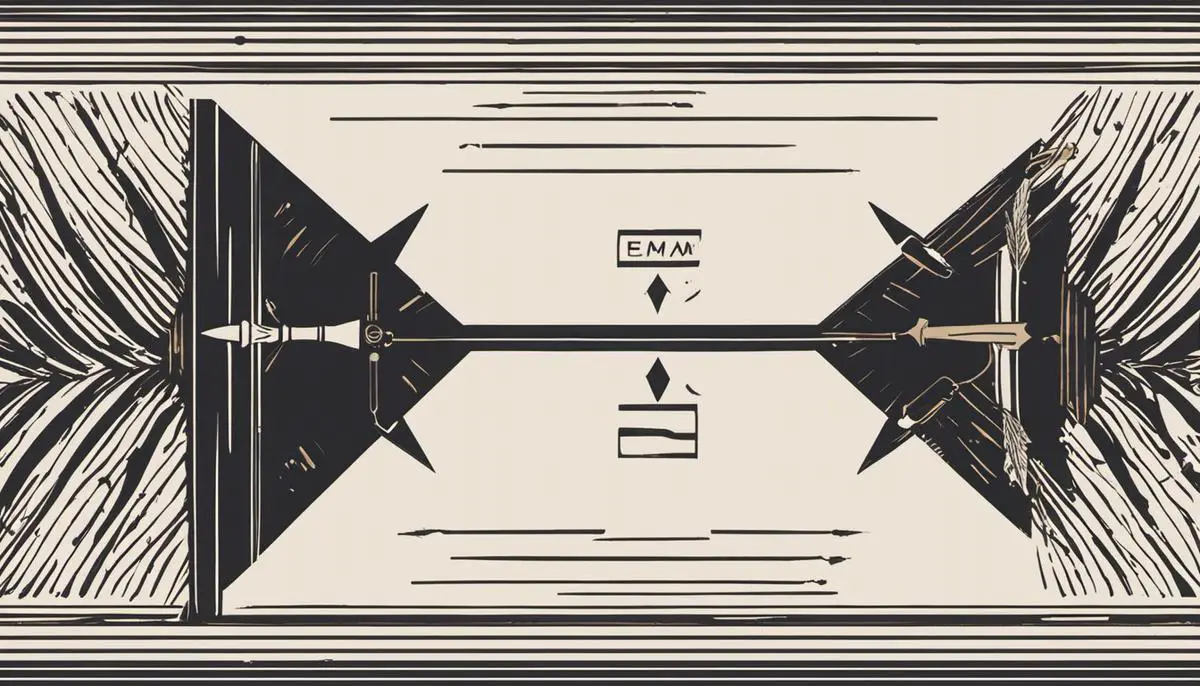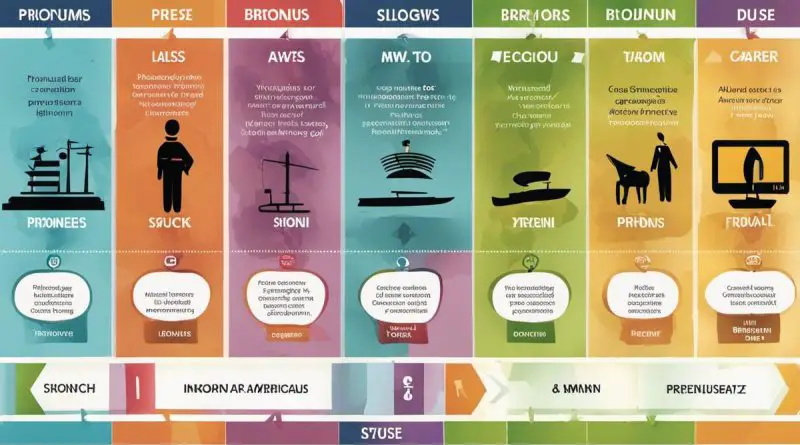Mastering Pronouns in British English: A Comprehensive Guide
In the vast and intricate tapestry that is the English language, it is often the humble pronoun that proves to be a source of confusion and contention. Heralding from an array of categories and burdened with various degrees of complexity, pronouns are as diverse as they are indispensable. From the personal pronouns that punctuate our daily discourse, to the subtly nuanced reflexive and emphatic pronouns that add depth to our sentences; each has its own unique role to play. Furthermore, understanding the relationship between a pronoun and its antecedent is more than just an intellectual exercise. It is an essential tool in our quest for clear and accurate communication. Nowhere are these complexities more prevalent than in the differing usages of pronouns across the pond, where British and American English often part ways. In the subsequent exploration, we shall unravel these intricate threads and emerge with a greater understanding of this cornerstone of English linguistics.
Basic Overview of Pronouns
Understanding Pronouns
Pronouns are fundamental components of English grammar, representing a class of words that substitutes for nouns or noun phrases. Pronouns provide a way to refer to entities mentioned in a conversation, narrative or text, without repeating the same nouns. This aids in maintaining fluency and coherence in speech and written text, making pronouns an indispensable part of language. For English learners, understanding the various types of pronouns and their uses is crucial in mastering the language.
Personal Pronouns
Personal pronouns are a type of pronouns that commonly stand in for people or things that have already been mentioned. They are sub-categorised into two types: subjective pronouns (I, you, he, she, it, we, they) used as the subject of a sentence, and objective pronouns (me, you, him, her, it, us, them) used as the object of verbs or prepositions.
Demonstrative Pronouns
Demonstrative pronouns “this,” “that“, “these,” and “those,” allow speakers to indicate items in relation to their distance from the speaker. “This” and “these” refer to items close to the speaker, whereas “that” and “those” refer to items further away.
Indefinite Pronouns
Indefinite pronouns include some, any, several, everyone, nobody, each, both, few, either, none, etc. As their name suggests, they do not refer to any specific person, amount, or object.
Pronouns in British English Vs American English
While pronouns generally maintain their form and function across various forms of English, certain differences can be observed primarily in terms of usage. For example, the singular “they” as a gender-neutral pronoun is more readily accepted in American English than in traditional British English, but is becoming increasingly common in both. Another difference is that American English tends to use “that” in place of “which” as a relative pronoun more often than British English.
Relative Pronouns
Relative pronouns, which include “who“, “whom“, “whose“, “that” and “which“, connect clauses or phrases to a noun or pronoun. For example, in the sentence “The man who lives next door is a doctor”, the relative pronoun “who” introduces the relative clause “who lives next door”.
Reflexive Pronouns
Reflexive pronouns are used when the subject and the object of a sentence are the same. They end in “-self” or “-selves”, and include words like “myself“, “yourself“, “itself“, “herself“, “ourselves” and “themselves“. For example, in the sentence “She prepared herself for the journey”, “herself” is the reflexive pronoun.
English, being a language abundant with numerous classes of pronouns and diverse usage cases, demands a certain level of comprehension to fully grasp the expanse of its pronoun usage. Nonetheless, acquaintance with these pronouns lays the cornerstone for a deeper understanding of the more intricate concepts in the language.

Interrogative and Relative Pronouns
Interrogative Pronouns
Within the English language, interrogative pronouns are employed to frame questions seeking information, eliciting a yes or no response, or proposing a choice. Key examples of these pronouns include ‘who’, ‘whom’, ‘whose’, ‘which’, ‘what’, and their compounded variants such as ‘whoever’, ‘whomever’, ‘whichever’, and ‘whatever’. Each pronoun is used to probe different types of information: ‘who’ seeks identity, ‘whom’ is for asking about who is on the receiving end of an action, ‘whose’ presents queries about ownership, ‘which’ is used when choosing from a specific group, and ‘what’ is used when seeking an identity or making a choice from unlimited options.
For instance, ‘Who ate the biscuits?’ is interrogating for the identity of the individual. ‘To whom did you give the book?’ is seeking information about who received the book. ‘Whose car is this?’ is asking about car ownership. ‘Which film should we watch?’ is suggesting specific film choices. ‘What do you fancy for supper?’ is proposing unlimited food choices for supper.
Relative Pronouns
Relative pronouns are words such as ‘who’, ‘whom’, ‘that’, ‘whose’, ‘which’, and the compounds ‘whoever’, ‘whomever’, ‘whichever’. These words initiate relative clauses, which are supplemental details about a preceding noun or pronoun, also named as the antecedent. Relative pronouns typically act as the subject, object, or possessive in the relative clause.
In using relative pronouns, it’s crucial to take note of the antecedent or the noun to which the relative pronoun refers. For instance, ‘who’ and ‘whom’ refer to people, with ‘who’ as a subject pronoun and ‘whom’ an object pronoun. Additionally, ‘which’ is used for animals and objects, while ‘that’ can be used for persons, animals, or objects. ‘Whose’ is mainly used for showing possession.
For example, in the sentence ‘The woman who spoke at the conference is my aunt’, ‘who’ is the relative pronoun referring to the woman. In ‘I remember the day that we first met’, ‘that’ is the relative pronoun referring to the day.
Engaging Exercises on Interrogative and Relative Pronouns
Here is a selection of example exercises to try:
- Who belted out the national anthem at the school assembly?
- The lad whose kite is lodged in the tree is my younger brother.
- Choose between the white shoes and the black shoes. Which pair takes your fancy?
- The bloke who had a chat with me is my professor.
These engaging exercises are designed to improve your understanding and use of both categories of pronouns. Remember, the context is crucial, as it significantly determines which pronoun to use.

Photo by polarmermaid on Unsplash
Reflexive and Emphatic Pronouns
Mastering Reflexive Pronouns
Reflexive pronouns come into play when the subject and object of a sentence are identical. Each personal pronoun aligns with a corresponding reflexive pronoun: I-myself, you-yourself/yourselves, he-himself, she-herself, it-itself, we-ourselves, and they-themselves. To provide an example, take the sentence, “I taught myself to play the piano.” Here, ‘I’ is the subject, ‘myself’ stands as the reflexive pronoun in the role of the object, and the action ‘taught’ reflects directly back upon the subject.
Understanding Emphatic Pronouns
Emphatic pronouns, which are the same words as reflexive pronouns, are used to add emphasis to the subject or object in a sentence. This means that it reinforces the importance of the noun or pronoun it is referring to. For example, in the sentence, “I myself don’t believe that story,” the emphatic pronoun ‘myself’ is used to emphasise the subject ‘I.’
The important distinction to remember here is an emphatic pronoun is used for emphasis, whereas a reflexive pronoun is used to reflect an action back to the subject, making the sentence reflexive. The removal of an emphatic pronoun may lessen the emphasis but will not disrupt the grammar of the sentence.
Enhancing Your Understanding of Reflexive and Emphatic Pronouns
Exercises can be a fantastic means to augment your comprehension and application of reflexive and emphatic pronouns. Let’s explore a few examples.
In the sentences beneath, your task is to categorise the type of pronoun – whether it’s being employed as a reflexive or an emphatic pronoun:
-
“She blames herself for the incident.”
-
“You’re capable of doing it yourself.”
-
“He declared the results himself.”
-
“I witnessed it with my own eyes.”
Solutions:
-
Reflexive: ‘herself’ is referring back to the subject, ‘she.’
-
Emphatic: ‘yourself’ is emphasising that ‘you’ have the capability to accomplish it independently.
-
Emphatic: ‘himself’ is stressing that ‘he’ personally announced the results.
-
Emphatic: ‘my own’ is underscoring the exclusive witnessing by ‘I’.
Mastering reflexive and emphatic pronouns not only polishes grammatical accuracy, but it also enriches the expressive depth and variety in language usage.

Pronoun-Antecedent Agreement
Grasping the Concept of Pronouns and Antecedents
Pronouns are words that substitute for a noun or noun phrase, whereas an antecedent is the noun or noun phrase that a pronoun alludes to. At times, the correlation between the antecedent and the pronoun is apparent. As an example, in the statement “Sarah cleaned her car,” “Sarah” acts as the antecedent and “her” serves as the pronoun. Here, the pronoun replaces the previously mentioned noun—the antecedent.
Rules of Agreement Between Pronoun and Antecedent
Understanding the rules of agreement between the pronoun and its antecedent is imperative. A fundamental rule of the English language states that a singular antecedent requires a singular pronoun, while a plural antecedent requires a plural pronoun. For instance, for the singular antecedent “student,” one would use “he” or “she,” but for “students,” the appropriate pronoun would be “they.”
Common Errors in Pronoun-Antecedent Agreement
Common mistakes arise when writers are not mindful of the antecedent’s number or gender. Misusing singular and plural pronouns is a widespread error, like using “they” for a singular noun because the gender is unknown or to be inclusive. However, this use has become gradually accepted in informal and even in some formal contexts.
The use of the wrong gender pronoun is another common mistake. In English, gendered pronouns (he, she, him, her) should agree in gender with their antecedents. Using “he” for a female subject or vice versa can confuse readers.
Avoiding Errors in Pronoun-Antecedent Agreement
To avoid these mistakes, always check to confirm that the pronoun and its antecedent agree in number and gender. Use plural pronouns for plural nouns and singular pronouns for singular nouns. Be mindful of the gender of the antecedent and choose the appropriate pronoun.
Examples and Exercises
Consider the sentence, “Every child must bring their hat.” The antecedent, “Every child,” is singular, but the pronoun, “their,” is plural. The correct sentence should be, “Every child must bring his or her hat.”
Try the following exercise for practice:
Incorrect: “If someone needs help, you should offer them assistance.”
Correct: “If someone needs help, you should offer him or her assistance.”
As you journey through the adventure of writing, it is imperative to have a clear understanding of the relationship between a pronoun and its antecedent. This not only ensures appropriate usage but also brings about clarity in your communication.

Advanced Uses and Issues in Pronouns
Elucidating the Difference Between ‘Who’ and ‘Whom’
‘Who’ and ‘whom’, while foreseen as interchangeable by many, often create confusion even among fluent English speakers. Their fundamental distinctions centred around grammatical usage separate them as ‘who’ stands as a subject pronoun and ‘whom’ as an object pronoun. ‘Who’, in essence, pertains to the individual executing an action in a construct, analogous to ‘he’, ‘she’, ‘we’, and ‘they’. A fitting instance would be, “Who penned the novel?” Conversely, ‘whom’ implies the recipient of an action, akin to ‘him’, ‘her’, ‘us’, and ‘them’. An appropriate example would be “For whom is the novel intended?” Imprecise usage of either can culminate in grammatical inaccuracies and unclear communication.
Ambiguity in Pronouns
Pronouns can introduce ambiguity in language when it’s unclear to whom or what the pronoun refers. This is especially true with the use of ‘it’, ‘this’, ‘that’, ‘he’, ‘she’ etc., when multiple subjects or objects are present. For instance, in the sentence, “John told Jim that he failed,” the pronoun ‘he’ could refer to either John or Jim. Similarly, ‘it’ in “Sarah left the cake on the table because it was stale” could ambiguously refer to either the cake or the table. Such ambiguities can cause misunderstandings, and to avoid them, it’s critical to ensure the antecedents (the nouns to which pronouns link back) are clear.
Evolving use of Gender-Neutral Pronouns
Gender-neutral pronouns have become a relevant aspect of modern English, reflecting societal changes towards recognising and respecting different gender identities. These pronouns are particularly used when a person’s gender is unknown, irrelevant, or when they don’t identify in the binary male-female spectrum. Examples of gender-neutral pronouns in English include ‘they’ – used in the singular form, as well as ‘zie’, ‘xe’ and ‘ve’. For example, “Taylor said they were not coming to the party.” Here, ‘they’ refers to Taylor as a single person. The use of gender-neutral pronouns is increasingly observed in literature and journalistic practices to represent inclusivity and gender diversity.
Pronoun Usage in Literature and Journalism
In literature, pronouns can be manipulated to develop depth in narratives or reflect a character’s voice. Virginie Despentes in her novel “Vernon Subutex 1” exploits the ‘we’ pronoun to create a collective narrator. Journalism often uses third-person pronouns to maintain a formal tone and objectivity. However, with the advent of more conversational journalism, ‘I’ and ‘you’ are more common, as in Gay Talese’s profile “Frank Sinatra Has a Cold” where he creates a connection between readers and Frank Sinatra, making it highly relatable.
Writing with Clarity
Writing with clarity requires a sound understanding of pronouns in various contexts. Advanced knowledge of pronouns helps in optimizing the power of language, whether it’s avoiding ambiguity, showcasing respect for diverse gender identities, or telling compelling stories.

By exploring the far reaches of pronoun usage, we have ventured into a world mirroring society in its diversity and growth. Unravelling the mysteries behind interrogative and relative pronouns, appreciating the subtle differences between reflexive and emphatic pronouns, and delving into the often perilous landscape of pronoun-antecedent agreement, our pathway illuminates many areas that are often shrouded in ambiguity. We’ve not only observed these linguistic phenomena but have also addressed the profound impact they can have on communication. Probing further, we’ve witnessed the shifting landscape of pronouns amidst ongoing public discourse surrounding inclusivity and gender-neutral terminology, highlighting its importance and indication of evolving societal norms. Indeed, the journey through the world of pronouns is one fraught with learning and discovery, reflecting our capacity for understanding, our thirst for clarity, and our unwavering commitment to the ongoing dialogue that forms the essence of human communication.
Elevate your content with Writio, the cutting-edge AI content writer! This article was skillfully crafted by Writio for your reading pleasure.

